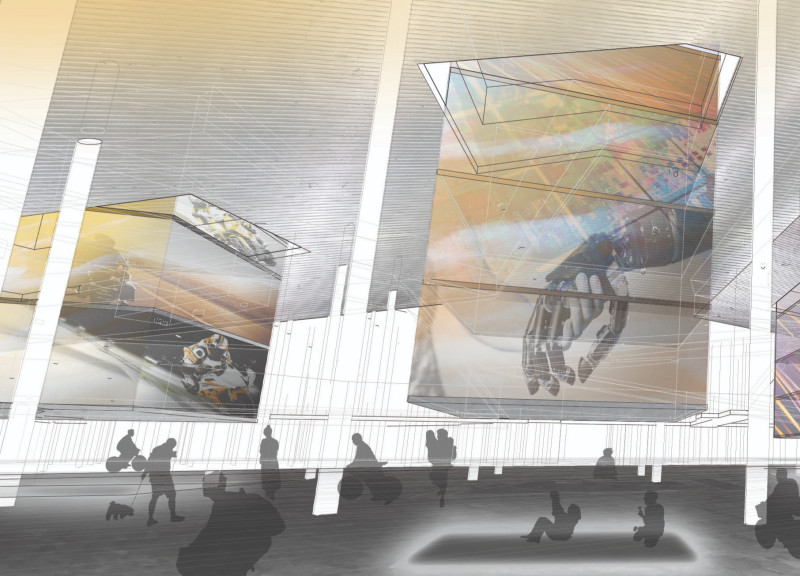5 key facts about this project
At its core, the project represents an integration of space that invites users to experience a fluidity between indoor and outdoor environments. The primary function of the building is to serve as a multi-purpose venue, accommodating various activities ranging from community gatherings to cultural events. This versatility is a significant aspect of its design, where different areas are strategically delineated yet remain interconnected, allowing for a seamless flow of movement throughout the space.
Key elements of the design include an emphasis on natural light, achieved through expansive glazing and strategically placed skylights. Such architectural decisions not only enhance the interior ambiance but also reduce the reliance on artificial lighting, contributing to the building's sustainability goals. The careful selection of materials further underscores this commitment to environmental stewardship. Materials such as locally-sourced timber, concrete, and glass harmoniously combine to create a warm yet robust structure. The choice of materials speaks to an intention of longevity and low maintenance while also reflecting a modern aesthetic that aligns with the surrounding urban fabric.
The layout of the building is organized around a central atrium that serves as the heart of the project. This space acts as a gathering point and is designed to foster community interactions. Surrounding this atrium are flexible spaces that can be adapted for varying functions, providing the necessary adaptability for community needs. These areas are equipped with movable partitions that allow for reconfiguration, demonstrating a forward-thinking approach to architectural design that prioritizes user experience.
Moreover, exterior elements of the project include landscaped terraces and green roofs that enhance the building's connection to nature while promoting biodiversity within the urban environment. This emphasis on green spaces not only contributes to the aesthetic appeal but also addresses urban heat island effects, demonstrating an awareness of contemporary environmental challenges.
Unique design approaches within the project can be identified through its integration of technology with architectural processes. Smart building systems have been incorporated to optimize energy use and improve user comfort. Additionally, the design reflects an understanding of passive heating and cooling strategies, which are essential in temperate climates. Features such as overhangs and shading devices are ingeniously woven into the façade, which further enhances the building's environmental responsiveness.
Additionally, public art installations and interactive components, such as digital interfaces, engage users and invite them to participate in the building's narrative. These elements illustrate a broader commitment to community involvement in the architectural process, allowing the space to evolve with its occupants.
This architectural project exemplifies a thoughtful balance between tradition and innovation, while its design has been meticulously crafted to meet the needs of the community it serves. With its emphasis on sustainability, adaptability, and user engagement, this project stands as a testament to the potential of architecture to create vibrant spaces that enrich the urban experience. It invites readers to delve deeper into its architectural plans, sections, designs, and ideas, encouraging a full appreciation of its multifaceted nature and the comprehensive thinking behind each design decision. For those interested, a further exploration of the project presentation will reveal even more intricate details and insights into its development.






































